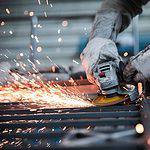The engine performance is indicated by the term efficiency. Today we will discuss about diesel engine efficiency and petrol engine efficiency. In auto industries, five engine efficiencies are used to check an engine performance. These efficiencies are Indicated thermal efficiency, Brake thermal efficiency, Mechanical efficiency, Volumetric efficiency and Relative efficiency. These all are that parameters which is used to check an engine performance and used to describe an engine completely. Today we will learn about them. Before learning these efficiencies, we have to learn about energy flow in an engine. It is desirable to have a general picture of the energy flow or energy balance of the engine so that we become familiar with the various performance parameters.
Energy flow in engine:
We know that energy can neither be created nor be destroyed. It can only be converted from one form to another. Therefore there must be an energy balance between input and output of the engine. In a engine fuel is fed into the combustion chamber where it burns and convert its chemical energy to the heat energy. These heat energy used to driving the piston. But the liberated heat energy cannot be totally utilized for work because of losses through engine exhaust, coolant and due to radiation from piston. The heat energy converted into power at this stage is known as indicated power. This power utilizes to drive the piston. There are also other losses like friction losses, bearing friction, pumping losses. Some of these energy used to driving auxiliary devices like feed pump, valve mechanism etc. The sum of all those losses are known as frictional energy and when it is expressed in power unit, known as frictional power. The remaining power is known as brake power available to useful work. These all energy balance can be understood by the figure shown below.
Efficiency of engine:
These are the main efficiencies used to check engine performance.
1. Indicated thermal efficiency:
This is the ratio of energy in the indicated power to the input fuel energy.
Indicated Power (KJ/s) / Energy of fuel per second ( KJ/s)
2. Brake thermal efficiency:
It is the ratio of energy in the brake power to the input fuel energy.
Brake Power (KJ/s) / Energy of fuel per second ( KJ/s)
3. Mechanical efficiency:
It is the ratio of brake power to the indicate power or can be define as the ratio of brake thermal efficiency to the indicated thermal efficiency.
Brake Power (KJ/s) / Indicated Power (KJ/s)
4. Volumetric efficiency:
This is one of the very important parameter of engine. it is defined as the ratio of actual volume flow rate of air into the intake system to the rate at which the volume is displace by the piston or it is the ratio of actual volume flow rate of air to the ideal volume flow rate of air according to piston displaced.
Actual volume of air drawn into cylinder / Ideal volume of air drawn into cylinder
In this parameter volumetric rate of air flow to be taken into account and not the mixture flow. Volumetric efficiency of diesel engine is higher than petrol engine.
5. Relative efficiency:
It is the ratio of the thermal efficiency of actual cycle to the thermal efficiency of ideal cycle. It show the degree of development of engine.
Actual thermal efficiency / Air Standard Efficiency
Today we have discuss about the efficiency of engine which used to check performance of petrol and diesel engine. If you have any query ask by commenting. If you like this article, don’t forget to share it on social networks. Thanks for reading it.





